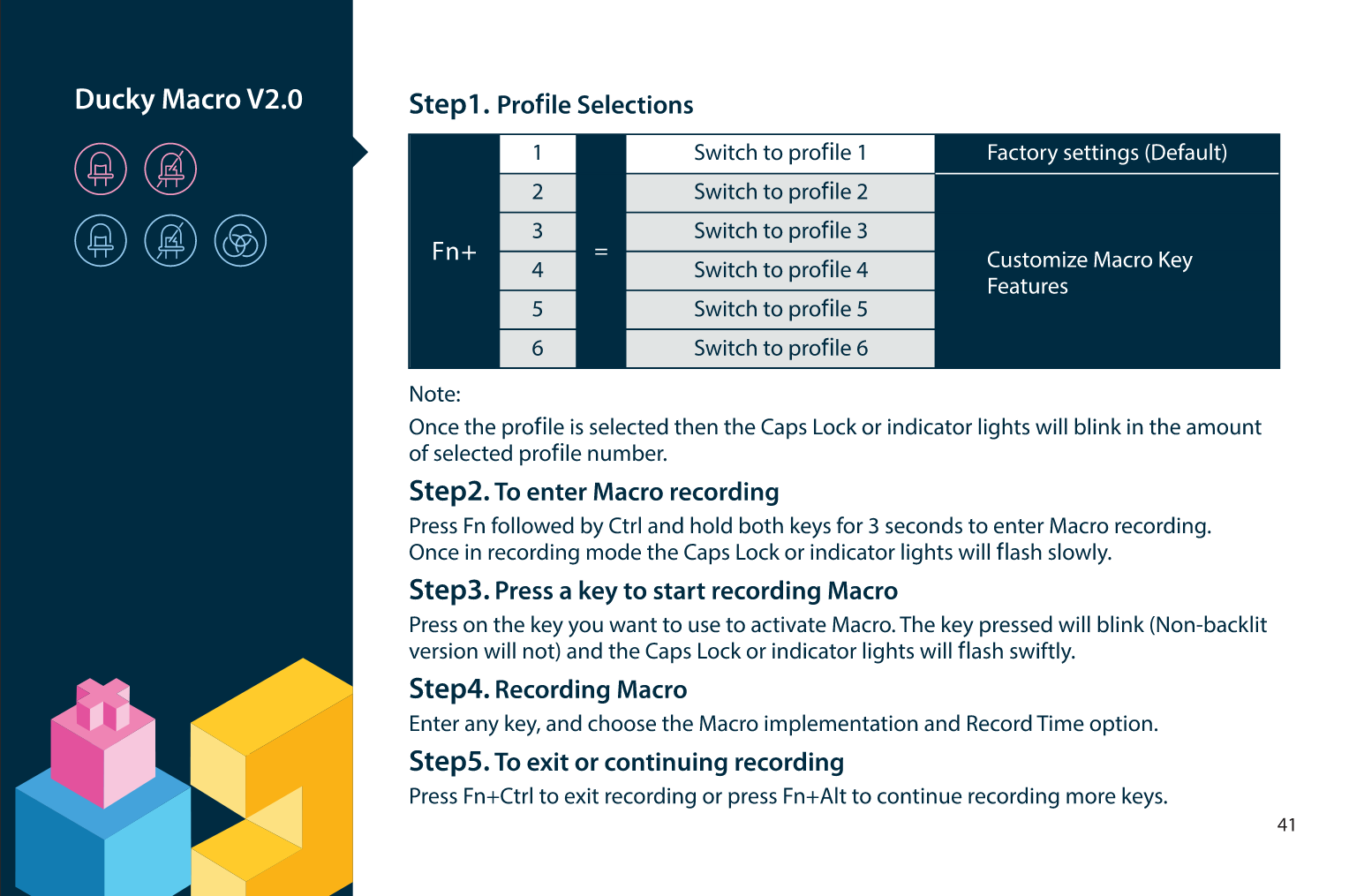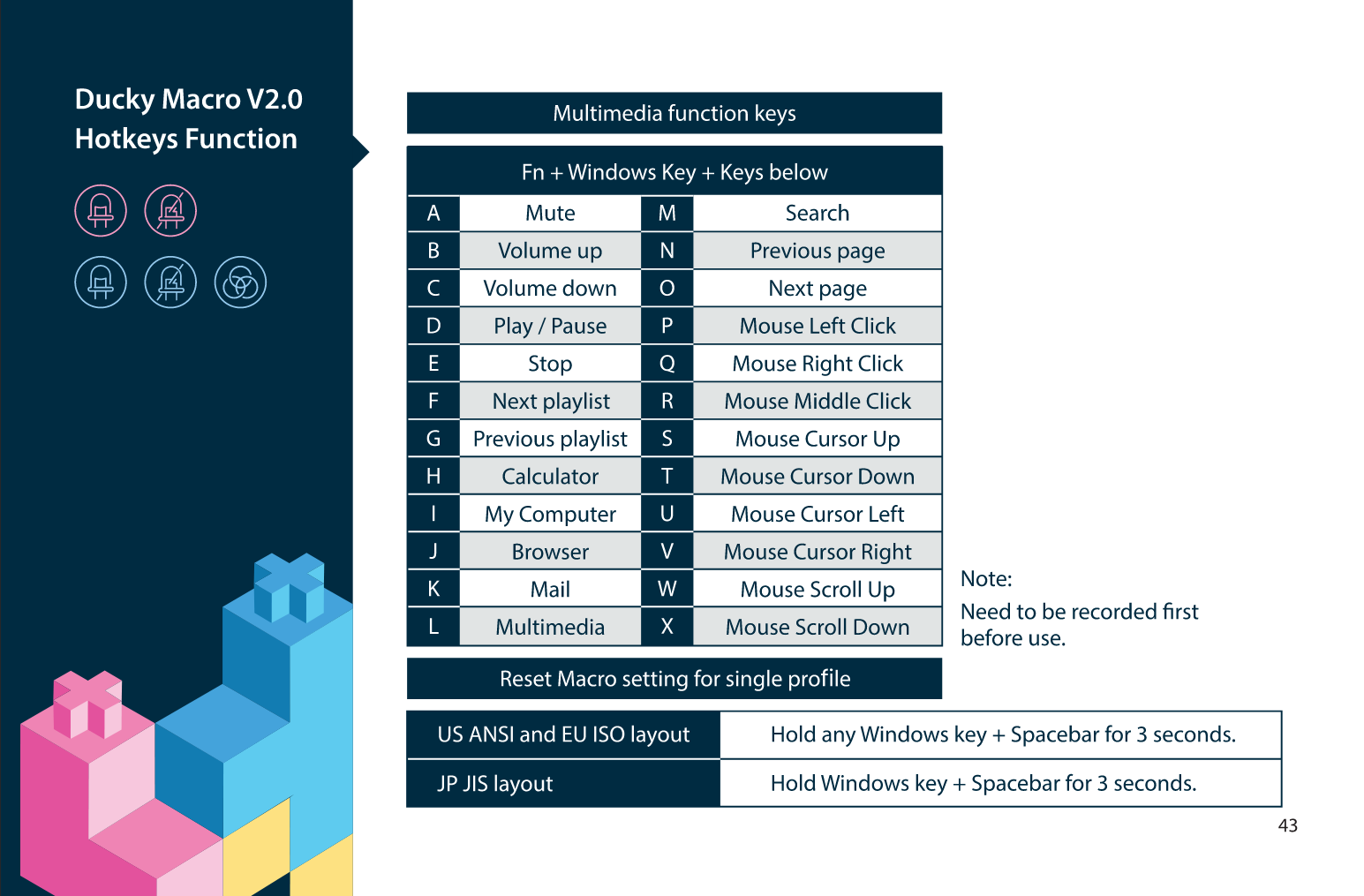Configure multimedia keys on a Ducky One keyboard
Table of Contents
My Ducky One 2 keyboard arrived around two years ago and I love it. I type more accurately and that clackety sound gives me that old computer feeling. (I went with Cherry MX Blue switches.)
Although it proviees some basic controls for media, such as muting and adjusting volume, there are no buttons for pausing music or switching to different tracks. That function exists, but it takes some configuration to work.
Handling media keys #
For those of you running a large desktop environment like GNOME or KDE, you likely have built-in multimedia key handling in the environment. However, I use sway and i3 and there’s no native handling there.
There’s a great utility called playerctl that makes this really easy.
If you’re on Fedora, run dnf install playerctl to get started.
Next, you’ll need some hotkeys in i3/sway:
bindsym XF86AudioPlay exec playerctl play-pause
bindsym XF86AudioNext exec playerctl next
bindsym XF86AudioPrev exec playerctl previous
Press Mod+Shift+c to reload your Sway/i3 configuration.
These are the standard multimedia keys that many keyboards have, but my Ducky keyboard doesn’t have them. The keyboard does have the ability to send these keystrokes through, but we need to set up a macro for them! Skip to the next section for that.
But before we go, playerctl handles all kinds of different multimedia players on your system:
$ playerctl -l
firefox.instance4056
spotify
I tend to use my media keys for Spotify most often, so I updated my Sway/i3 configuration to this:
bindsym XF86AudioPlay exec playerctl -p spotify play-pause
bindsym XF86AudioNext exec playerctl -p spotify next
bindsym XF86AudioPrev exec playerctl -p spotify previous
This ensures that my media keys won’t interfere with something in Firefox and will always control my Spotify media. 😉
🚨 Before going any further, check that playerctl works! 🚨
Run playerctl -p spotify play-pause one time and your music should play if it wasn’t playing before, or it should pause if it was already playing.
Run it one more time to ensure it does the opposite the second time.
Use a different player or remove the -p argument entirely to test it with other players.
RTEM (Read the excellent manual) #
The Ducky One 2 has a helpful manual in English and Chinese. We need a macro to get the multimedia keys working and that process isn’t easy to follow as it spans multiple pages.
📚 If you need a manual for a different Ducky keyboard, their support page has a wizard that helps you find the exact manual for your keyboard.
The good stuff starts at page 41 in my manual:

First, determine which profile you want to use. In my case, I chose profile 2.
Next, we need to know which multimedia function keys are hidden away in the keyboard’s firmware:

For each key combination, we need to know which keys we want to press to trigger the multimedia key (letters above). I’m most interested in play/pause, previous track, and next track, so I’m building out my configuration like this:
- Play/Pause:
Fn+End(keyD) - Previous track:
Fn+PgUp(keyG) - Next track:
Fn+PgDown(keyF)
Making macros #
Now we’re ready to record a macro.
Switch to profile 2 with Fn+2.
The LED underneath the 2 should blink briefly.
Enter macro mode by holding down Fn and Ctrl for three seconds (press Fn first, though).
The keyboard indicators at the top right of the keyboard should be blinking slowly.
Carefully set the macro:
- Hold down
FnandCtrlfor three seconds. Indicator lights should blink slowly. - Hold
Fnand pressEnd. - Hold
Fn, then hold the Windows key, then pressD(for play/pause). Release all keys after pressingD. - Exit macro recording mode by holding
Fnand pressingCtrl. Release all keys.
Repeat for previous track:
- Hold down
FnandCtrlfor three seconds. Indicator lights should blink slowly. - Hold
Fnand pressPgUp. - Hold
Fn, then hold the Windows key, then pressG(for previous track). Release all keys after pressingD. - Exit macro recording mode by holding
Fnand pressingCtrl. Release all keys.
Finally for next track:
- Hold down
FnandCtrlfor three seconds. Indicator lights should blink slowly. - Hold
Fnand pressPgDn. - Hold
Fn, then hold the Windows key, then pressF(for next track). Release all keys after pressingD. - Exit macro recording mode by holding
Fnand pressingCtrl. Release all keys.
Testing #
You did test playerctl by itself earlier, right? 😜
If you didn’t, go back to the first section and save yourself some frustration.
Press Fn+End and your music should toggle between playing and paused.
Press Fn+End once more and it should toggle again.
If playerctl works on the command line, but doesn’t work via the keyboard macro, you can go back through the macro setting steps above.
You can also clear a macro from a key by holding Fn+Ctrl for three seconds, tapping the misconfigured key, tapping the same key again, and pressing Fn+Ctrl.
Enjoy your quick access to multimedia keys! ⌨ 🎶